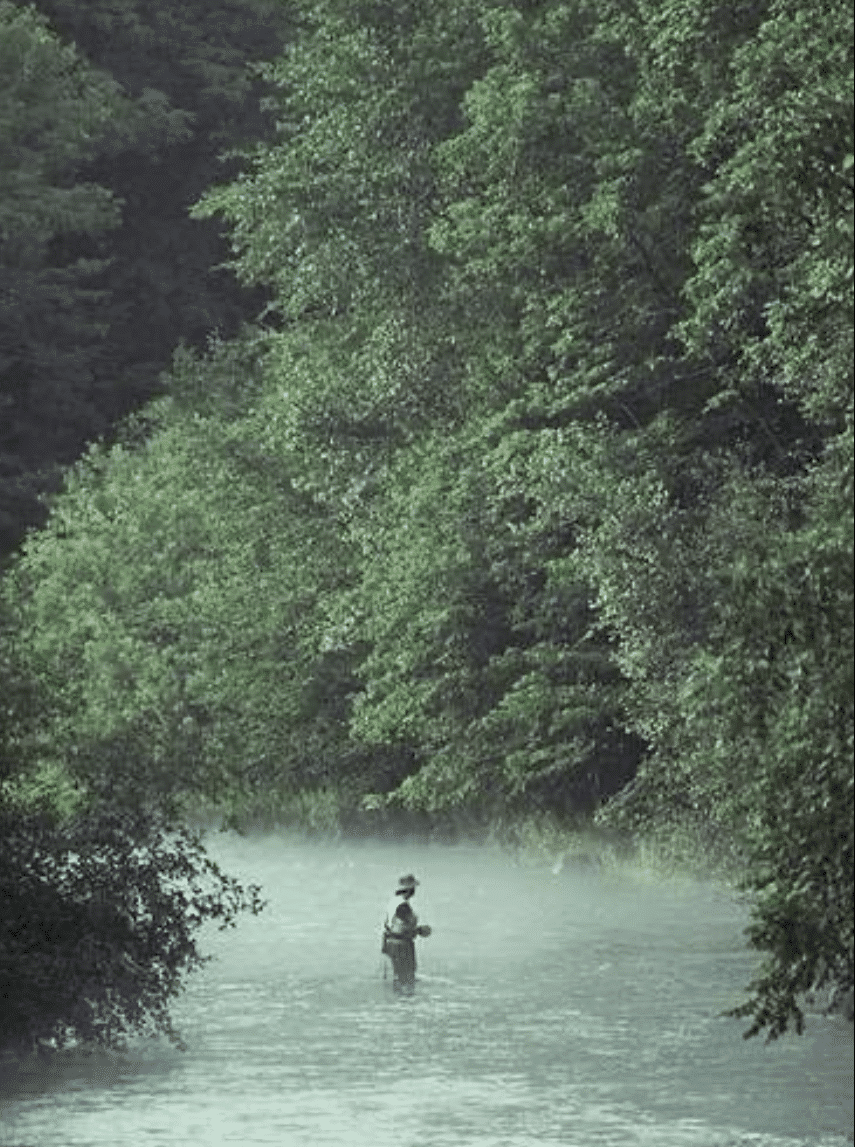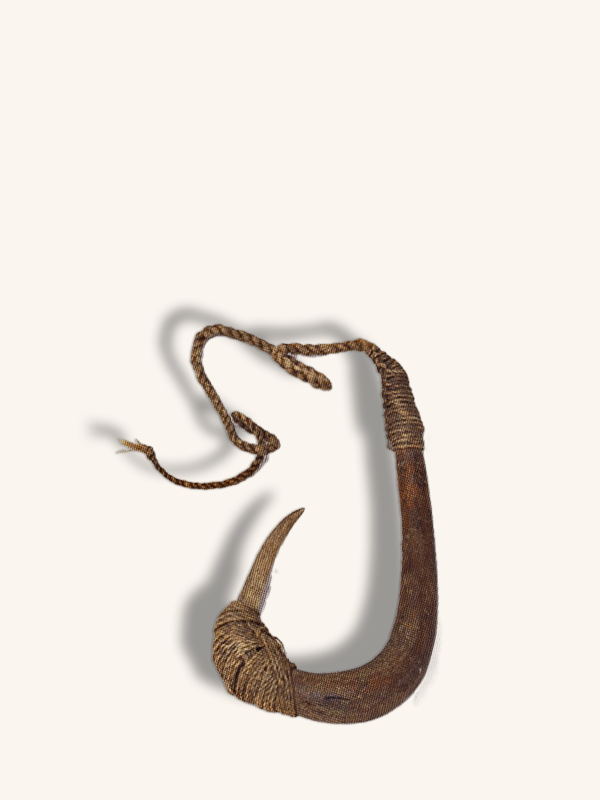
The charm of split bamboo
The charm of split bamboo

I caught my first trout on the fly in July 1965, on the Seulles river, in Normandy. It weighed about a pound, had gobbled a “Pont-Audemer” and I remember that its big yellow fins were the same color as the wood of the “Parabolic Spéciale Compétition”, that Pierre Creusevaut, the world champion caster and best friend of Charles Ritz, had lent me for the vacations.
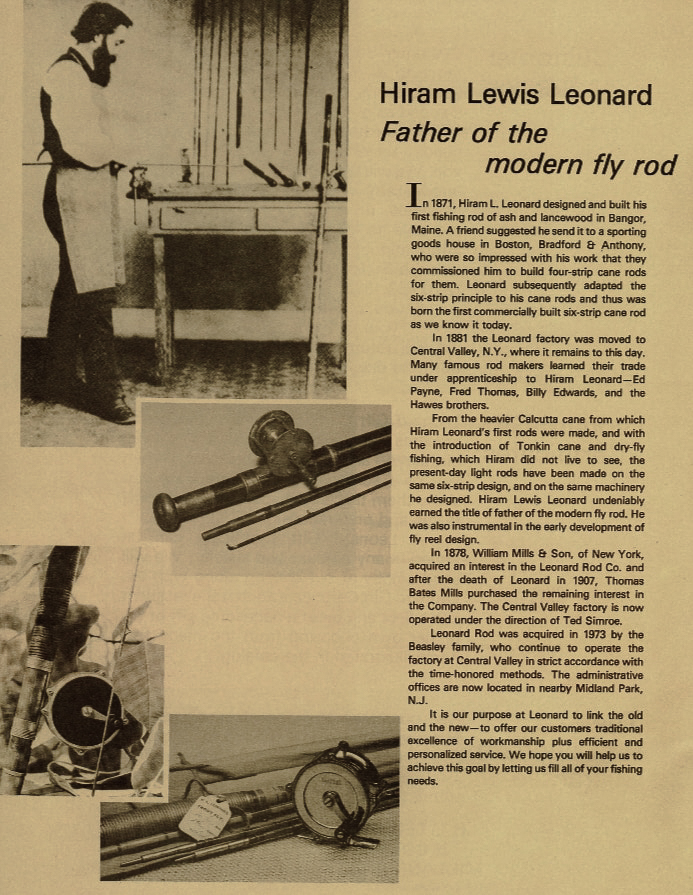
Hiram Leonard is the true inventor, since 1871, of the "modern" canes in split bamboo with six strands, such as we still know them today. Previously, a few craftsmen made canes with four glued strands.
At that time, fiberglass was still in its infancy and it would take another eleven years (1976) to see the first carbon fiber rods appear. Until the middle of the 70’s, the only good rods to cast a fly in distance as well as in precision were made of split bamboo, by Pezon & Michel, Hardy, Winston, Leonard, Orvis and some American craftsmen. From 1976 and the first graphite rods, as carbon fiber was called at the beginning, like millions of fly fishermen around the world, I also started using carbon.

Bamboo, which is not a tree but a "grass", is a hollow plant, of which only the periphery, extremely hard, is used to make fishing rods.
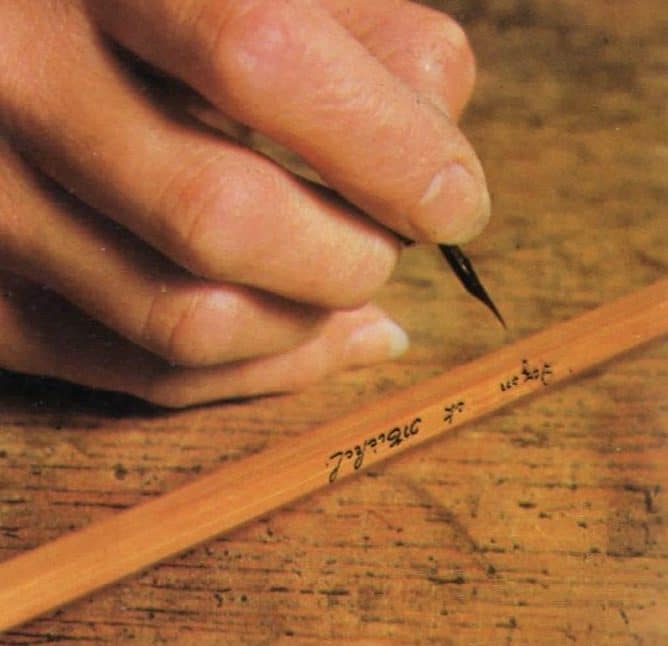
Inscribed with India ink on the base of the butt, before being varnished, the different models of Pezon canes are immediately identifiable.
But, very quickly, in 1982 to be precise, when Claude Batault, fabulous caster and friend of Charles Ritz, made me discover the “Upper Dean” in British Columbia, its steelheads and their dry fly fishing with the “8 feet 8 Laerdal”, I came back “half” to the split. I say “half” because the “Laerdal” that Claude lent me is a hybrid rod from the very limited Vario-Power series. Manufactured at the instigation of Charles Ritz by Pezon & Michel between 1968 and 1971, the four models of this mini-series had a fiberglass butt and a tip made of the best quality split. These rods were a total commercial failure, but still remain, in my opinion, among the best in casting and fly fishing.
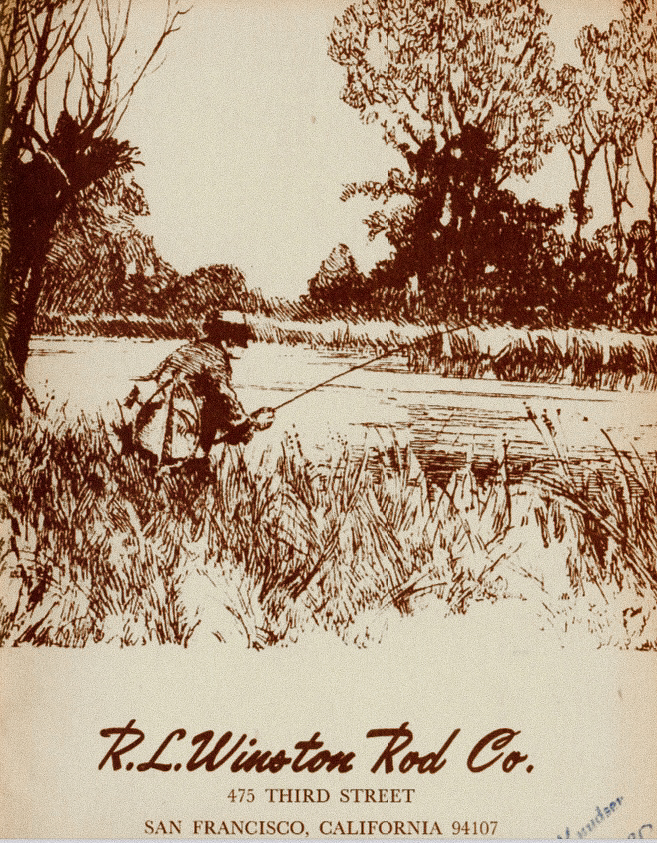
The Winston Company of San Francisco manufactured in "small" series, some of the best split rods available. One of their particularities was to have hollowed out butt ends, for an obvious weight saving.
In fact, I only really fished with two-handed carbon fiber rods for six years, from 1976 to 1982. I must admit that on powerful and wide rivers, like the Gave d’Oloron, the Allier, the Scottish Spey or the Norwegian Gaula, my 15 or 16 feet carbon rods allowed me to make long casts and catch some salmon…. but in retrospect I am not sure that I would not have caught them by casting a little less far, with one-handed rods In any case, for a long time now, I don’t see any interest, apart from the pleasure of casting in “Spey cast”, to fight a salmon, even a very big one, on a 15 or 16 feet carbon rod.
Less trout are caught with a split bamboo rod than with a carbon rod.
Catching a big fish with a small split rod is a pleasure like no other. Besides the pleasure of fishing with a beautiful object, a split rod brings other satisfactions and even certain advantages, especially in the fight with the fish. All the fishermen who still use split-bamboo to fish for trout, salmon or any other species will tell you that they loose far fewer fish than with carbon fiber rods. I also fish from time to time with greenheart rods, true “cow tails”, and I will testify that if you had to use a type of rod to have the best chance of getting a salmon to dry out once it has bitten, this is the material you should choose. I think that the nervousness of carbon, its rigidity, its almost instantaneous response time to any solicitation, especially to the head strikes of the fish, make the latter feel like so many electric discharges the impacts that the carbon fibers transmit to him in return for each of his contortions. And this is all the more true as the rod action is “tip”, a current trend of many manufacturers who favour casting to reach ever greater distances, to the detriment of the fish’s hold.
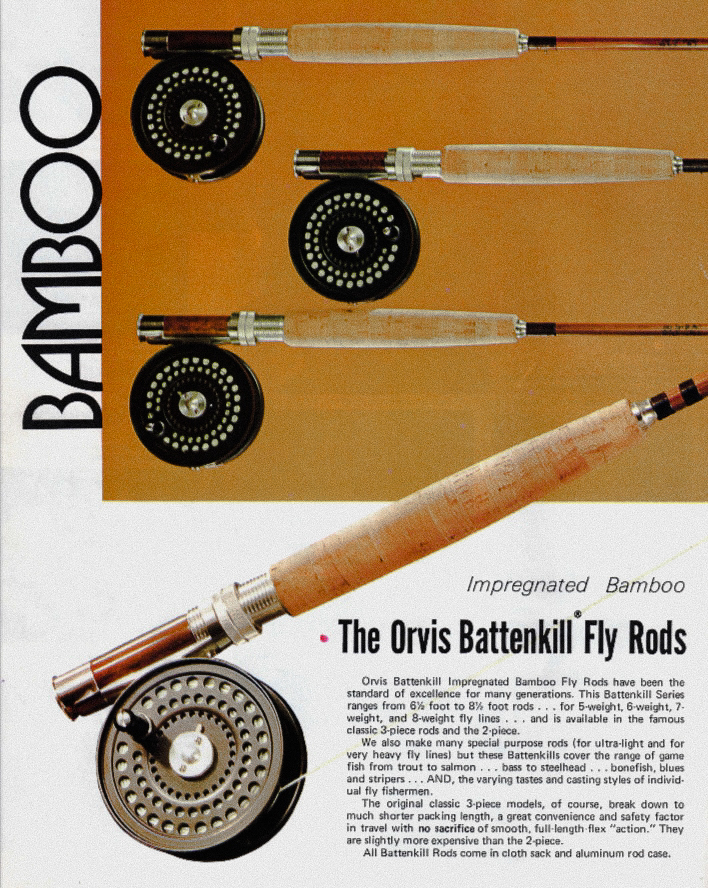
Named after the Battenkill River in the state of Vermont, the eponymous Orvis bamboo impregnated rod is available in lengths from 6.5 to 8.5 feet for trout fishing. These models are very popular today.
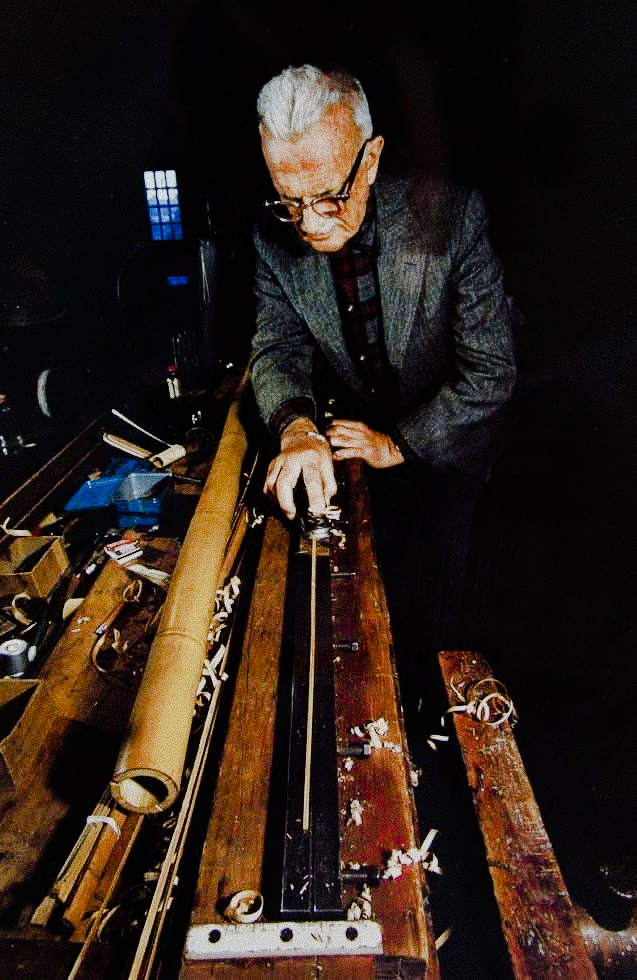
Everett Garrison, probably along with Paul Young and "Pinkie" Gillum, were the three greatest "artists" in split bamboo.

With a precision palmer, this craftsman measures the diameter of a split scion.
For the old ones who started with the split bamboo, passed to the fiberglass, before investing in carbon, let us remember, including and perhaps moreover more, with the rods to be thrown, of the increase in the number of lost fish, unhooked in the course of fight, when of the hollow fiberglass we passed to carbon.
I remember that on the Gave d’Oloron, at the end of the 70’s, the last professional anglers were looking everywhere to buy old and heavy Telebolic casting rods (in fiberglass) from Pezon & Michel, loosing as many salmon with the carbon “Plateau” rods as a priest could bless, as Raymond Pourrut said.
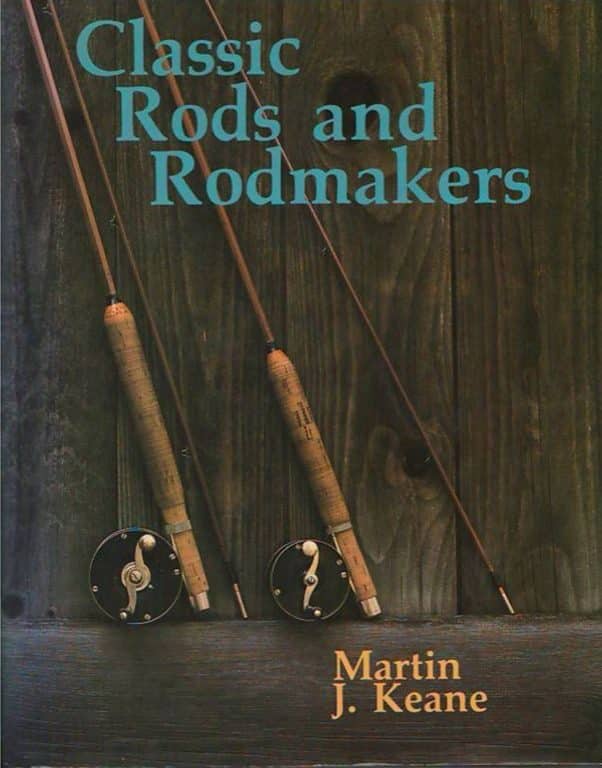
Many books, including Martin Keane's, have inventoried and extolled the best and most classic American split bamboo canes.
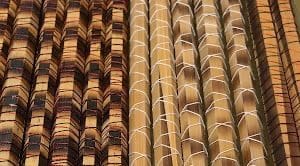
Once glued, and before drying, the bamboo sticks are strongly held together by strong ties. The difference in color, on the left, shows bamboo split "flamed", passed through the flame to harden it.
It was the same with the “first generation” carbon salmon fly rods, including the famous 16 feet Navarrenx from Plateau, which must have saved more salmon than all the efforts of Cogepomi and Migradour combined. This rod was a real boner that allowed athletic fishermen to lengthen 35 meters of line, but it also caused most of the salmon that had been hooked to be unhooked during the fight.
With the exception of the fabulous Hollolights series from Hardy, made of hollowed out bamboo like the famous Winston rods, I would not advise you to switch to split bamboo with a rod longer than 12 or 13 feet. From 14 feet and especially 15 feet (the length most commonly used today in carbon for salmon fishing), split bamboo are too heavy. On the other hand, from 10 to 13 feet, most of the Hardy, Sharpe, Farlow or Pezon rods remain in a very reasonable weight range. For example, an 11-foot Hardy Wye, one of my favorite models, weighs only 330 g and is perfectly balanced by a Perfect 3 ½ or 3 3/4 reel. This rod allowed me in October 2022, to catch without any problem, in Iceland a sea trout of 1,01 m and 59 cm of waist estimated at at least 12 kg. As this big male was just bitten by the single hook of my drowned fly, at the end of the beak, I am sure that with a carbon rod, it would have come off.
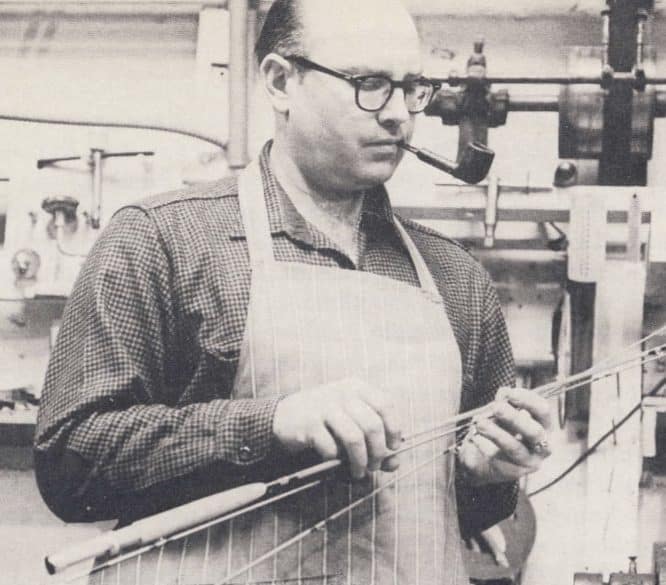
Gary Howell, Winston's master craftsman, examining one of the latest models from the famous San Francisco firm.
For two-handed rods, 12 to 13 feet maximum should be preferred.

It was not until the 1920's that Hardy was able to manufacture split bamboo canes that could compete with the standard American canes.
Over the last thirty years, I have used this rod a lot in Scotland, Norway and especially in Russia, where it has allowed me to catch quite a few salmon of close to or over ten kilos. Let’s not forget that the river Wye, in Wales, which gives it its name, was famous until the 70’s for its very big salmon. For Iceland and its “small” salmon, the Wye is much too powerful. For the latter country, I prefer to use strong one-handed trout rods, like the Hardy “Tourney”, CC de France 9 or 10 feet, or some models of Pezon & Michel like the Vario Power, the fabulous “130 g” or some PPP… For those who prefer small two-handed rods (sometimes useful, when the wind blows a little strong, as it is often the case in the land of the Vikings), the incomparable AHE Wood models N°1 and N°2 from Hardy, are with the Parabolic 10p 5 and 12 feet from Pezon, what is done best. Not only for Iceland… but apart from this little Nordic paradise, there are not many rivers left in Scotland or Ireland where, in summer, you can be sure to get more than one or two small salmon or grilse per week.
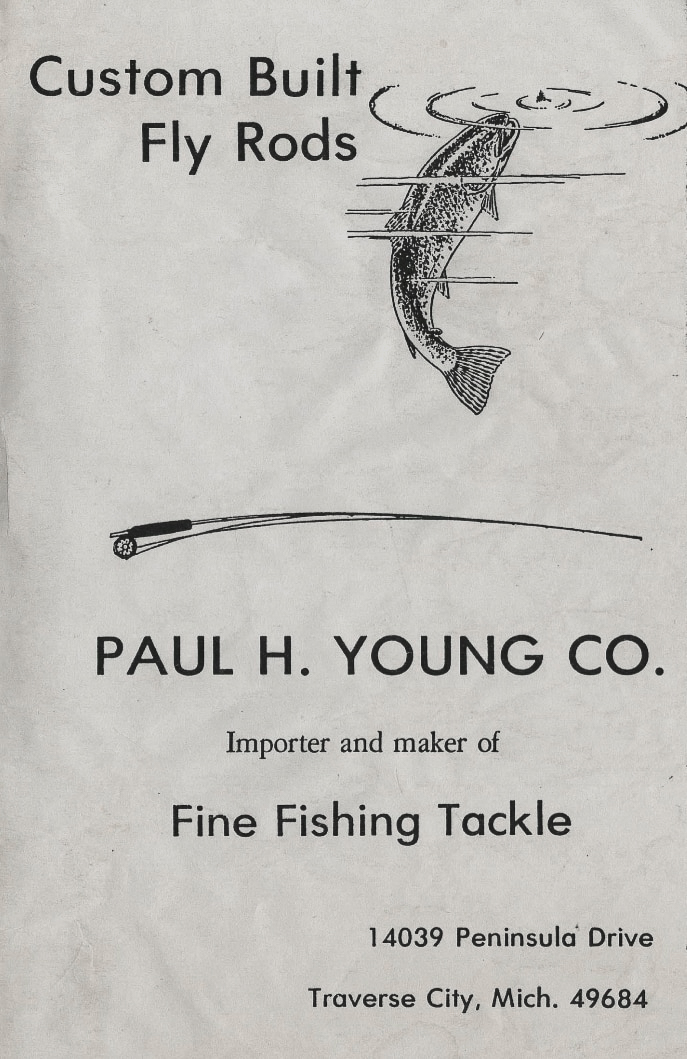
Between 1925 and 1966 Paul Young only made about 3000 rods by hand, less than 80 rods per year. The shortest models of 6 to 7.5 feet are highly sought after and are traded today between $4000 and $8000.
All 12 feet long and available in three powers, N°1, 2 and 3, the “AHE Wood” from Hardy weights between 265 g and 395 g. These rods are, depending on their power, perfect for fishing almost everywhere and I caught with the N°2 some very big salmon on the rivers of the Kola Peninsula, several of which were filmed for the Seasons channel. The ” Wood ” casts wonderfully in Spey Cast up to a good 20 meters (distance largely sufficient to cover 80% of the salmon anywhere in the world), and if you want, without getting tired, to cast further, it is easy to equip them with a “shooting head” of 8 or 9 meters long followed by a good running line, which will then allow you to reach 25 to 30 m and when the wind will be with you to place your fly a little farther still. The Wood N°1 and N°2 (light and medium models) are in fact one and a half hand rods. This is what their designer, Arthur Wood of Cairnton on the Dee, had asked Hardy to make, in the thirties. For the little story, this fabulous fisherman took in twenty years, with these rods more than ten thousand salmon on his beat of the average Dee.
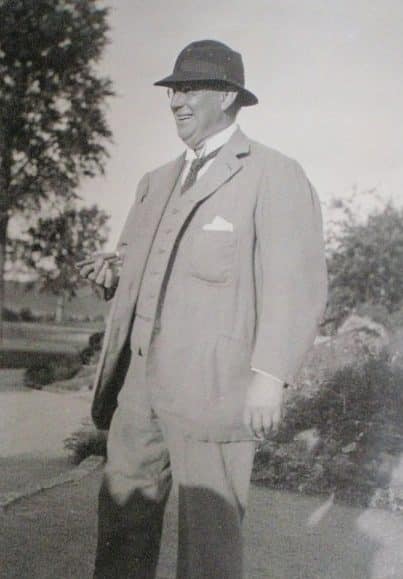
Arthur Wood, who in the 1930s and 40s caught more than 10,000 salmon on his run on the Dee River in Scotland, gave his name to some fabulous 12-foot rods made by Hardy.
Much less sought after than trout rods, salmon rods in split cane, even in perfect condition, are traded in “vintage” at much lower prices.
The “Wye” and “Wood” rods, which were manufactured in large quantities until the early sixties by the Hardy company, can still be found easily in the auctions of vintage equipment in England or Scotland. Their prices are very reasonable, even when they are still in perfect condition. In fact, every three or four years, the lords and wealthy fishermen who used them would send them back to Hardy’s in the winter, during the off-season, to have them revarnished and possibly change one or two rings if necessary. As far as the budget is concerned, I must say that I don’t understand why a “good” brand of carbon rod for salmon fishing from 10 to 15 feet, costs currently a minimum of 800 to 1400 €, when for half or a third of these prices you can afford a splendid Wye, Wood or Parabolic, in very good condition, if not “like new”….
As for the one-handed split cane rods, less than 10 feet, we have here the embarrassment of choice. For small Icelandic salmon, I find perfect the PPP “longcast” (Claude Batault type) of Pezon which for a length of 8 foot 7 weighs 169 g. A little more powerful, although lighter, the “130 g” still from Pezon, which as its name indicates, should not exceed this weight. This model, made at the instigation of Ritz and Creusevaut in the fifties for competition casters, allows, with an 8 m “shooting-head” made from a weight forward (WF) of n°10/11 line, to cast quite easily “in fishing” at about thirty meters. With this rod, I fought an 11 kg salmon on the Kola River and several 9 kg ones in July 2017 without any problem. Another of my favorite one-handed rods is the Hardy “Tourney”, (again a competition rod) also in 9 feet and weighing only 190 g. This very powerful rod is perfect for riffling hitch or dry fly fishing with small bombers. As this model was very popular in England as well as in the United States, by sea trout and salmon fishermen, and not only by competition casters, it was manufactured in quite large quantities between 1950 and 1965, and unlike the 130 g Pezon, it is quite easy to find at auctions.



